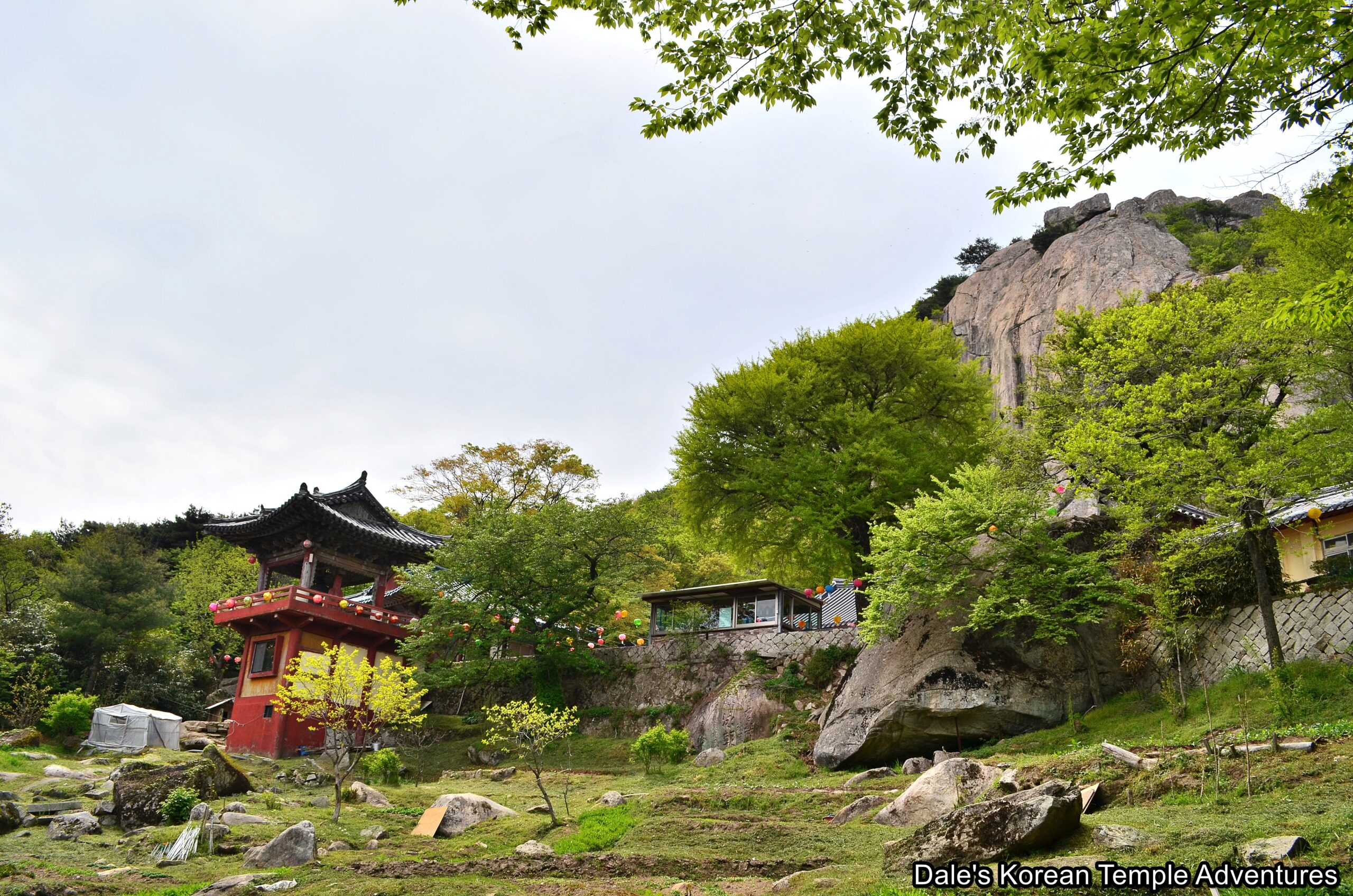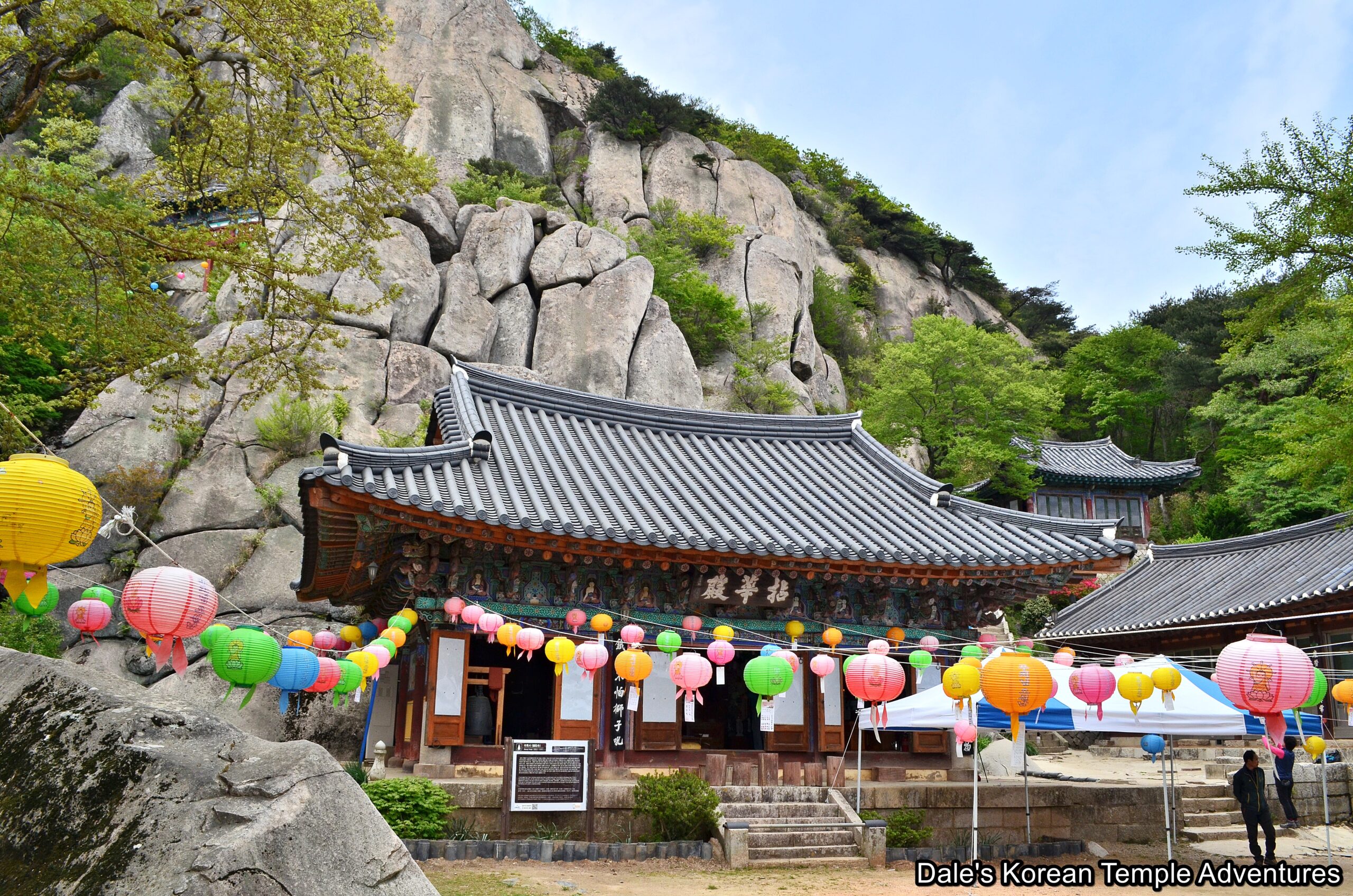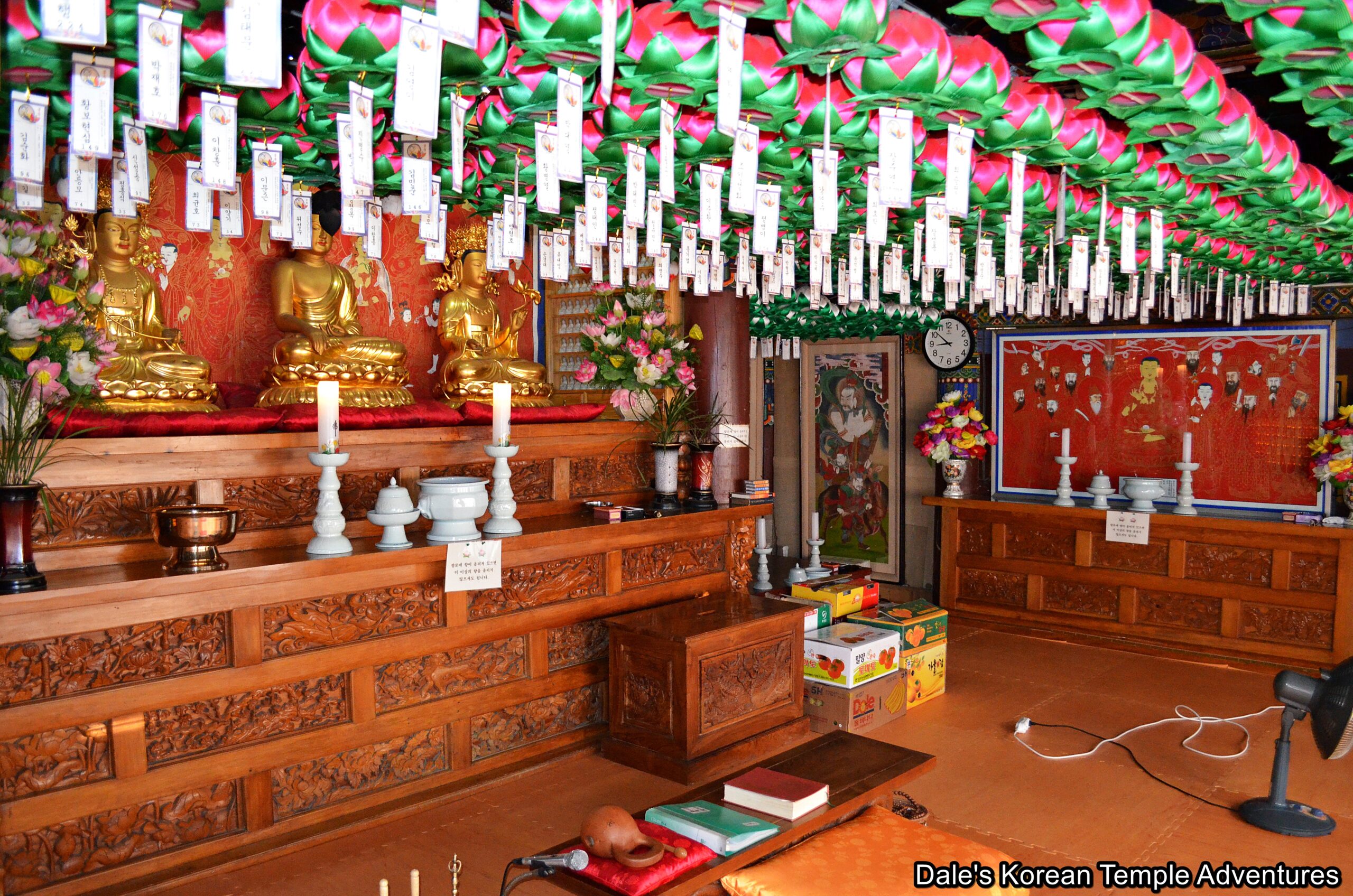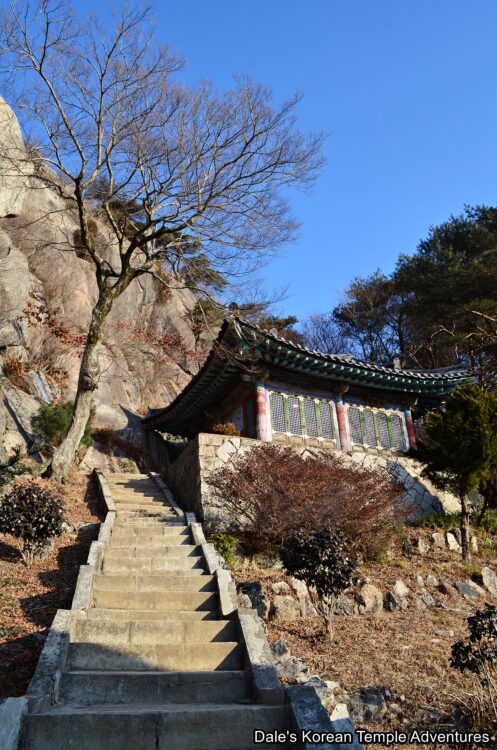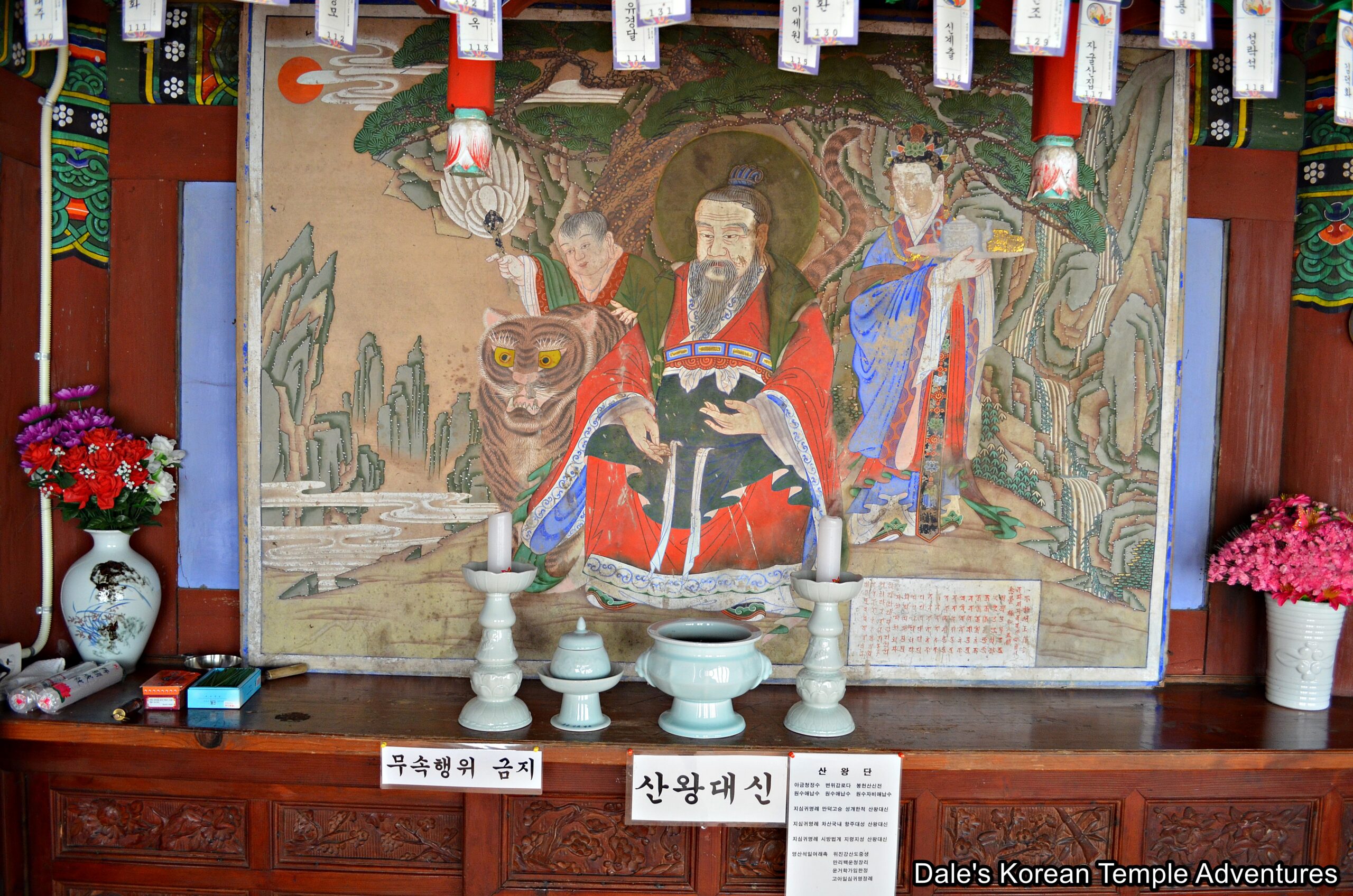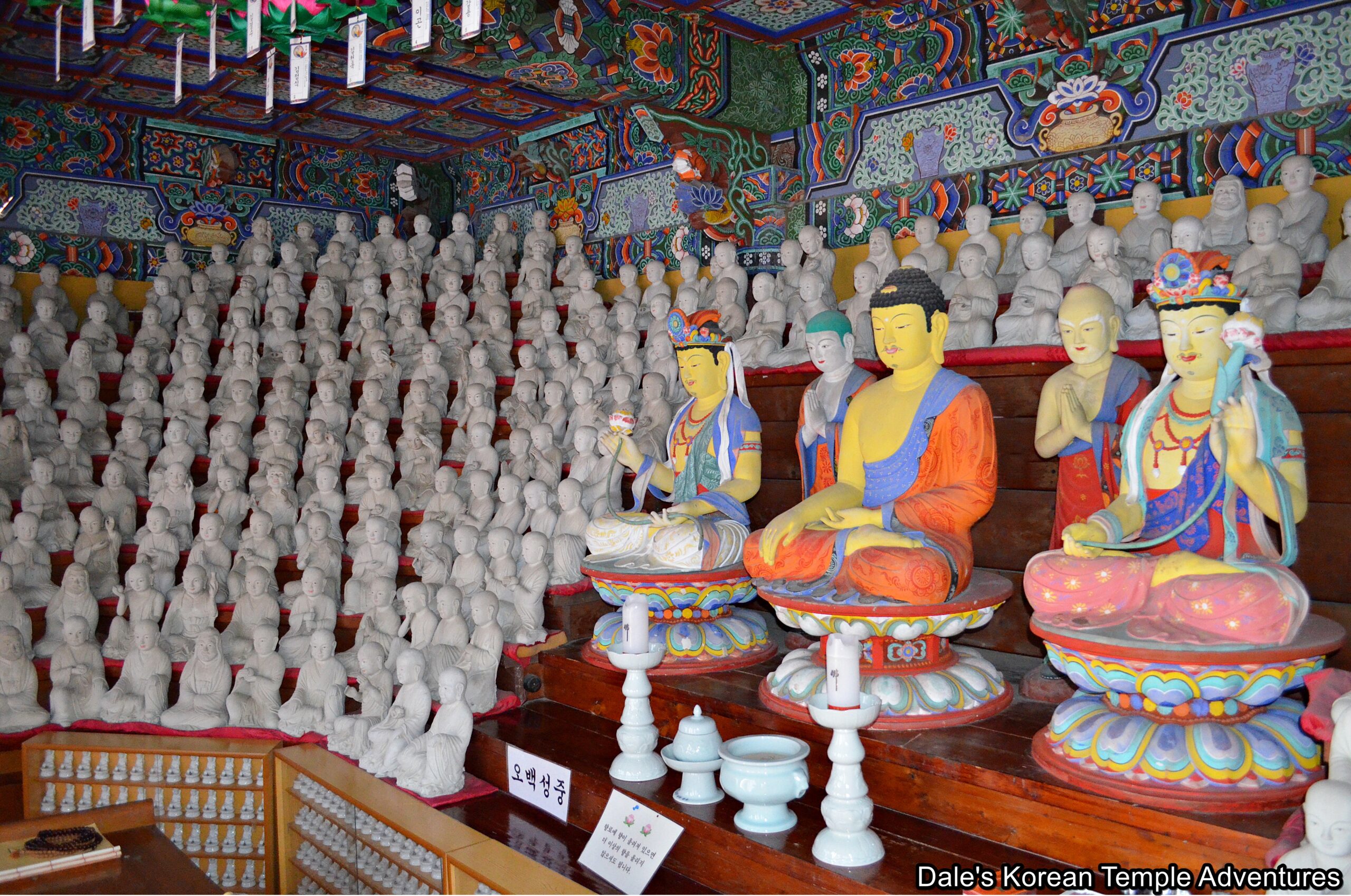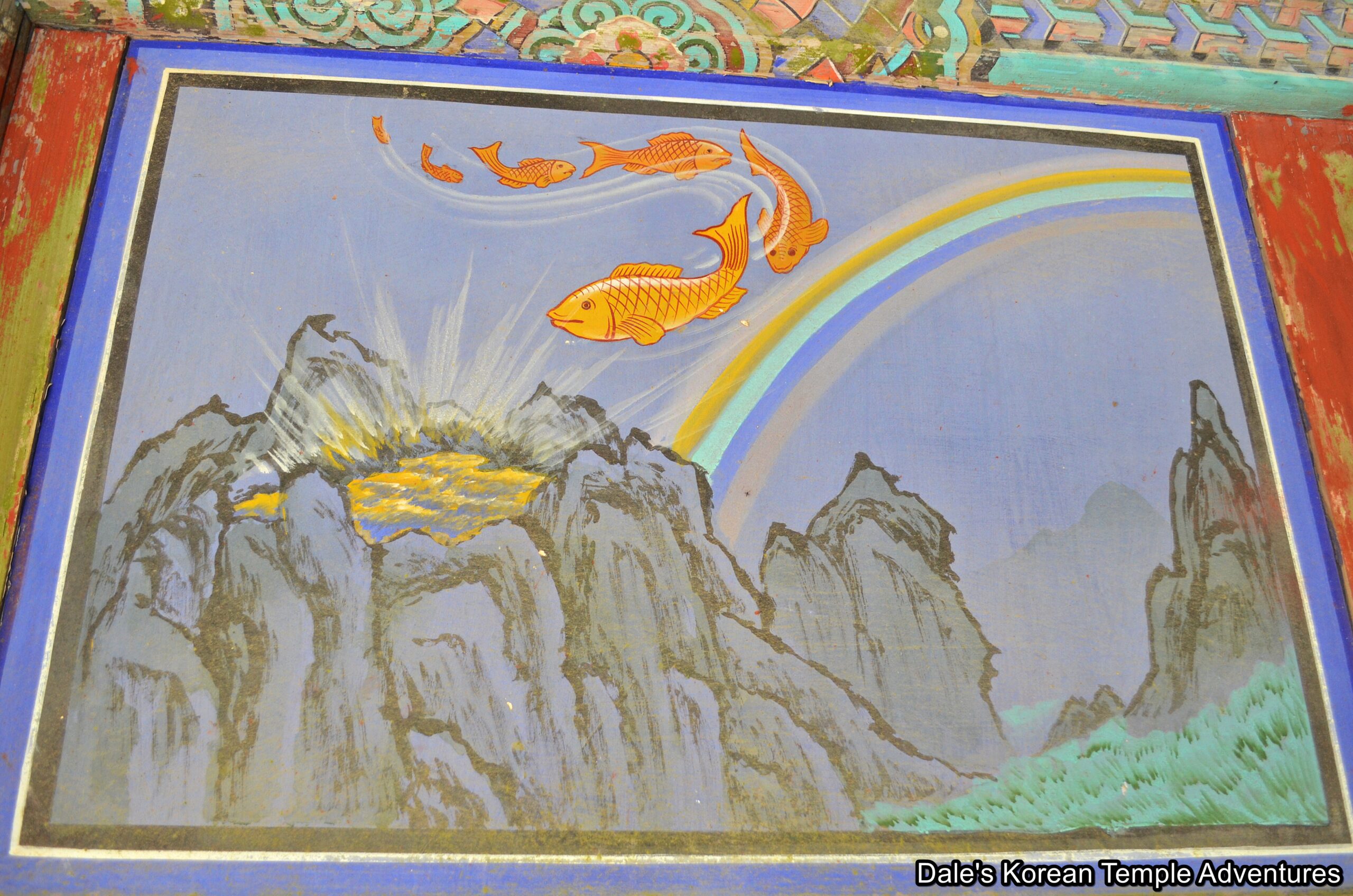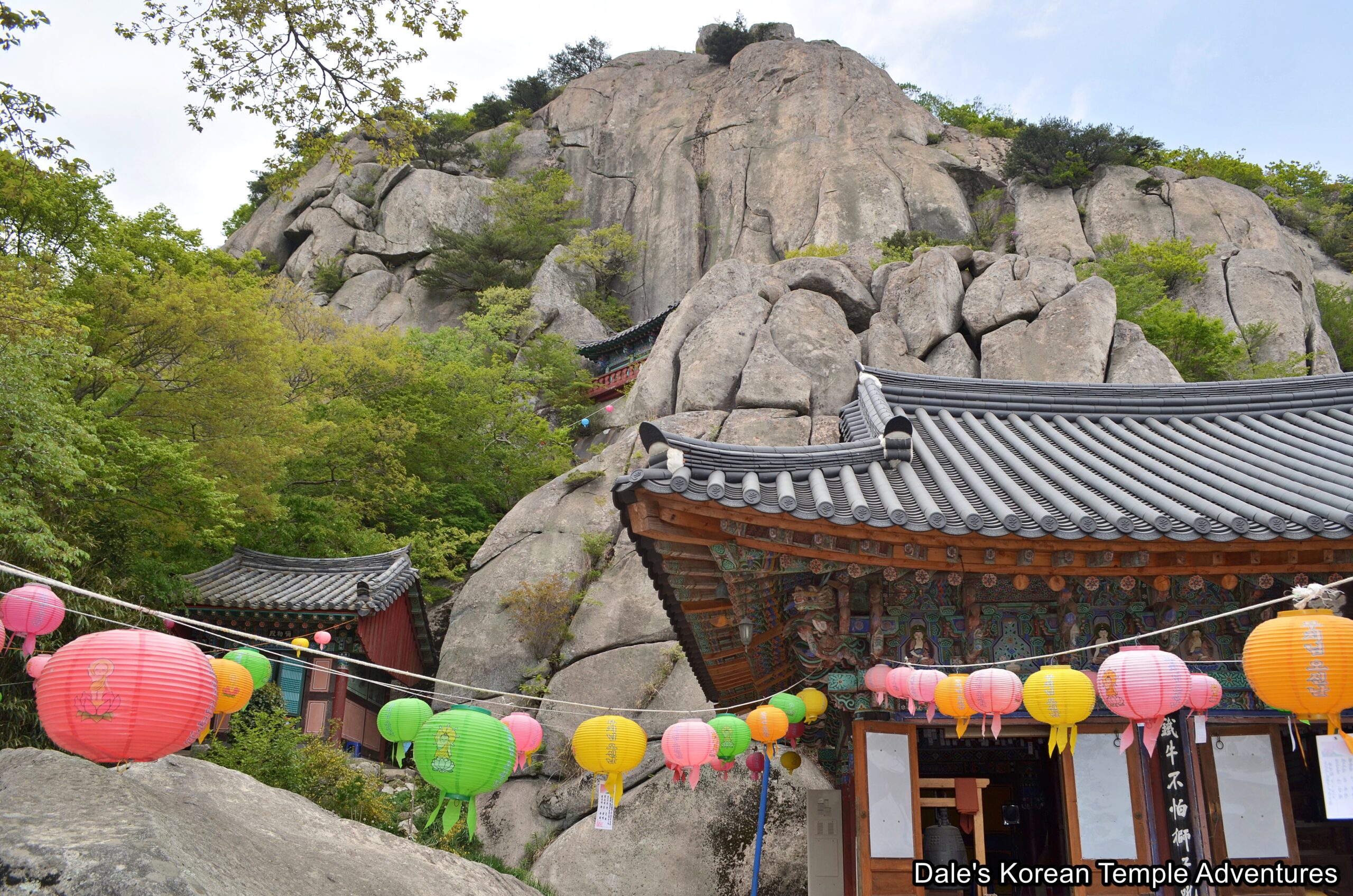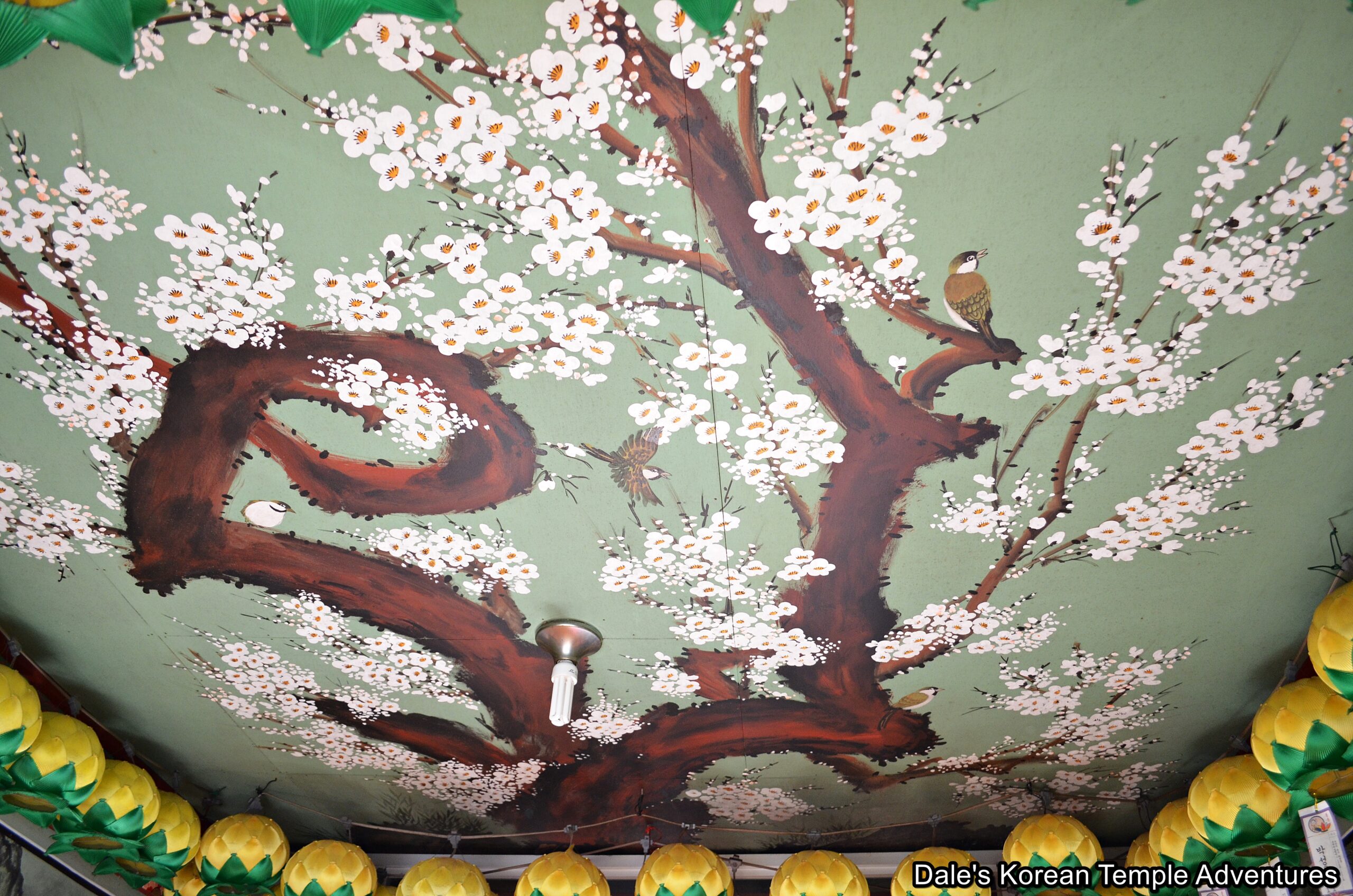Mireuksa Temple – 미륵사 (Geumjeong-gu, Busan)
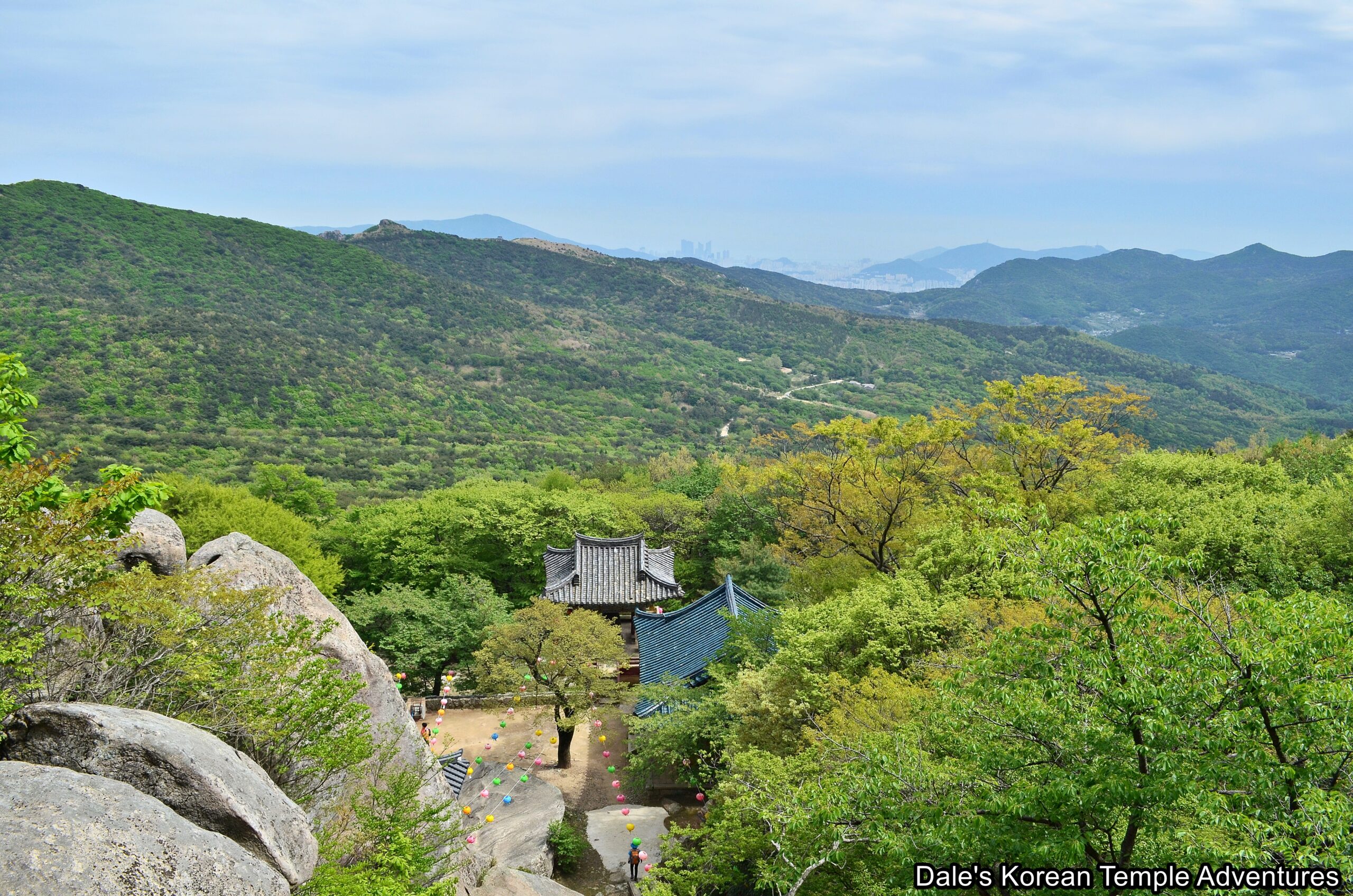
Temple History
Mireuksa Temple, which is located in Geumjeong-gu, Busan, is indirectly named after the Future Buddha, Mireuk-bul. The reason that the temple is named after Mireuk-bul is because Mireuksa Temple is located under Mireuk-bong Peak (712m) on Mt. Geumjeongsan (801.5m). And the reason that Mireuk-bong Peak gets the name it does is because it’s believed to resemble Mireuk-bul wearing a laureate. From this, it’s believed that Mireuk-bong Peak has given people spiritual energy throughout the centuries.
The exact date of the temple’s construction is unknown. However, it’s believed by some that Mireuksa Temple, which was formerly known as Mireukam Hermitage, was founded by the famed monk Wonhyo-daesa (617-686 A.D.) in 678 A.D; which, coincidentally enough, is when the famous neighbouring Beomeosa Temple was first built. Another theory states that Wonhyo’s friend, Uisang-daesa (625-702 A.D.) built Mireuksa Temple after Wonhyo-daesa was purported to have built the temple. However, without any documentation stating otherwise, it’s nearly impossible to say definitively when Mireuksa Temple was first constructed.
Interestingly, there are two legends that surround Mireuksa Temple and Mireuk-bong Peak. In the first legend, it’s believed that a dragon once lived inside a cave near Mireuk-bong. The other legend states that there used to be a rock behind the temple grounds that produced rice by drips and drabs. This was during the time of Wonhyo-daesa. However, when the monk Sangjwa attempted to greedily produce even more rice from this rock, the miraculous rock suddenly stopped producing rice. Now, instead of rice, water flows from a spring in this area. This rock is still known as SSal-bawi, or “Uncooked Rice Rock,” in English.
Temple Layout
You first approach Mireuksa Temple up a long and steep mountainous trail. The first thing you’ll notice is the temple bell pavilion protruding out from the rocky foundation that supports the rest of the temple grounds. After finally summiting all those rocky stairs on Mt. Geumjeongsan, you’ll pass by the temple visitors’ centre and kitchen. Framing the entire temple grounds is the crowning Mireuk-bong Peak. Also having passed by the adjacent monks’ dorms, you’ll finally arrive in the main temple courtyard at Mireuksa Temple.
The first temple shrine hall at Mireuksa Temple that you’ll find is directly to your right. Interestingly, this main hall is called the Yeomhwa-jeon Hall. Surrounding its exterior walls are fading Shimu-do (Ox-Herding Murals). There’s also a cracked painting dedicated to an all-white Gwanseeum-bosal (The Bodhisattva of Compassion) that also adorns the hall’s exterior walls. As for the interior, and sitting on the main altar, you’ll find a triad of statues centred by Seokgamoni-bul (The Historical Buddha). This statue is flanked on either side by Bohyeon-bosal (The Bodhisattva of Power) and Munsu-bosal (The Bodhisattva of Wisdom). On the far left wall you’ll find an all-red Shinjung Taenghwa (Guardian Mural). And in the far right corner, you’ll find a red mural dedicated to Jijang-bosal (The Bodhisattva of the Afterlife). The most unique aspect of the Yeomhwa-jeon Hall are the Shiwang, or the Ten Kings of the Underworld, in English, murals that are tucked away in the corner to the left of the Jijang-bosal mural. While there are only two murals dedicated to the Shiwang, as well as a mural dedicated to a Geumgang-yeoksa (Vajra Warrior), they are all masterful in composition.
To the left of the Yeomhwa-jeon Hall, and a large rock protruding out from the ground, is the Nahan-jeon Hall. The exterior walls to this hall are filled with paintings dedicated to the Nahan (The Historical Disciples of the Buddha). There are also murals dedicated to Wonhyo-daesa, the Bodhidharma, and Dazu Huike. There’s also a beautiful mural with a golden fish and a rainbow backing it that speaks to the origins of the mountains name; namely, that a golden fish descended down from the heavens on a five-coloured cloud and played in a well on top of Mt. Geumjeongsan. It’s believed that this golden well never dries up. As for the interior of the Nahan-jeon Hall, you’ll find two startling life-sized Geumgang-yeoksa protectively guarding the two entries to this temple shrine hall. Sitting on the main altar is a triad, once more, centred by Seokgamoni-bul (The Historical Buddha). He’s joined on either side, again, by Bohyeon-bosal (The Bodhisattva of Power) and Munsu-bosal (The Bodhisattva of Wisdom). This familiar triad is then joined by five hundred stone statues of the Nahan.
To the left of the Nahan-jeon Hall is the temple’s bell pavilion that you first saw when entering Mireuksa Temple. And to the right of the Nahan-jeon Hall, you’ll find the compact Mireuk-jeon Hall. This smaller sized shrine hall houses a solitary statue of Mireuk-bul (The Future Buddha) on the main altar. This statue is joined by a shrine hall filled with beautiful floral paintings, as well as beautiful scenes from nature. But the most impressive painting inside this hall is the cherry blossom tree that’s painted on the ceiling of the hall with a bird perched on one of the tree’s limbs.
To the left rear of the Mireuk-jeon Hall, and up a set of stone stairs, is an elevated shrine hall just beneath the heights of Mireuk-bong Peak. This crowning shrine hall is dedicated to Dokseong (The Lonely Saint). From these heights, you can see beautiful Busan down below, including the Gwangan-daegyo Bridge off in the distance. Take your time, the views are breathtaking. As for inside this hall, you’ll find a stone relief of Dokseong that’s carved directly onto the face of the mountain. The image of Dokseong is beautifully surrounded by the walls of the altar that houses this shamanic stone relief.
The final shrine hall that visitors can explore at Mireuksa Temple is located to the right rear of the main hall. The Sanshin/Chilseong-gak Hall is situated up a long set of stone stairs. This shaman shrine hall is rather unique in that it houses Sanshin (The Mountain Spirit) and Chilseong (The Seven Stars) without Dokseong. There’s a unique mural of a tiger that adorns the exterior walls of this shaman shrine hall. As for the interior, you’ll find two simplistic murals. One unique feature is that it seems as though a dongja (assistant) is fanning the tiger in the Sanshin mural. Also of note, there’s a sign inside this shrine hall telling shamans not to hold rituals at Mireuksa Temple. Perhaps they’ve had problems in the past.
How To Get There
To get to Mireuksa Temple, you’ll first need to make your way to the Hwamyeong subway stop, which is on the second line of the Busan subway system. The Hwamyeong subway stop is stop #235. From this stop, you’ll need to catch a bus bound for Deokcheon Rotary. Take the Busan city bus identified as “Sanseong – 산성.” Ride this bus until you get to the centre of the mountain community of Sanseong, which will probably take about fifteen to twenty minutes. Nearing the outskirts of this community, you’ll need to get off near a large bathroom complex (yes, you heard me correctly). You’ll see a small brown sign that directs you towards the northern gate – 북문 of the Busan Mountain Fortress, Geumjeongsanseong. Follow this road for 1.5 kilometres. Along the way, you’ll see a sign to your immediate right, which directs you up a steep entry road. Follow this gravel road for an additional two kilometres. Finally, past the barrier gate that blocks traffic from entering, you’ll need to head up this unused road for another three hundred metres until you see a silver sign marker that says the temple name on it in Korean. Follow the forested trail up the mountain for an additional seven hundred metres. The trail is rather easy to follow as there are several colourful paper lanterns that lead you the rest of the way. In total, the walking part of the hike is about 4.5 kilometres.
Overall Rating: 8/10
Mireuksa Temple is a truly hidden gem among the temples in Busan. While a bit difficult to get to, there are numerous shrine halls at Mireuksa Temple to enjoy like the Dokseong-gak Hall, the Mireuk-jeon Hall with the beautiful cherry blossom mural, and the well-populated Nahan-jeon Hall. In addition to this amazing artistry and architecture, you can enjoy the spectacular views of Busan down below from the heights of Mt. Geumjeongsan and Mireuksa Temple.
